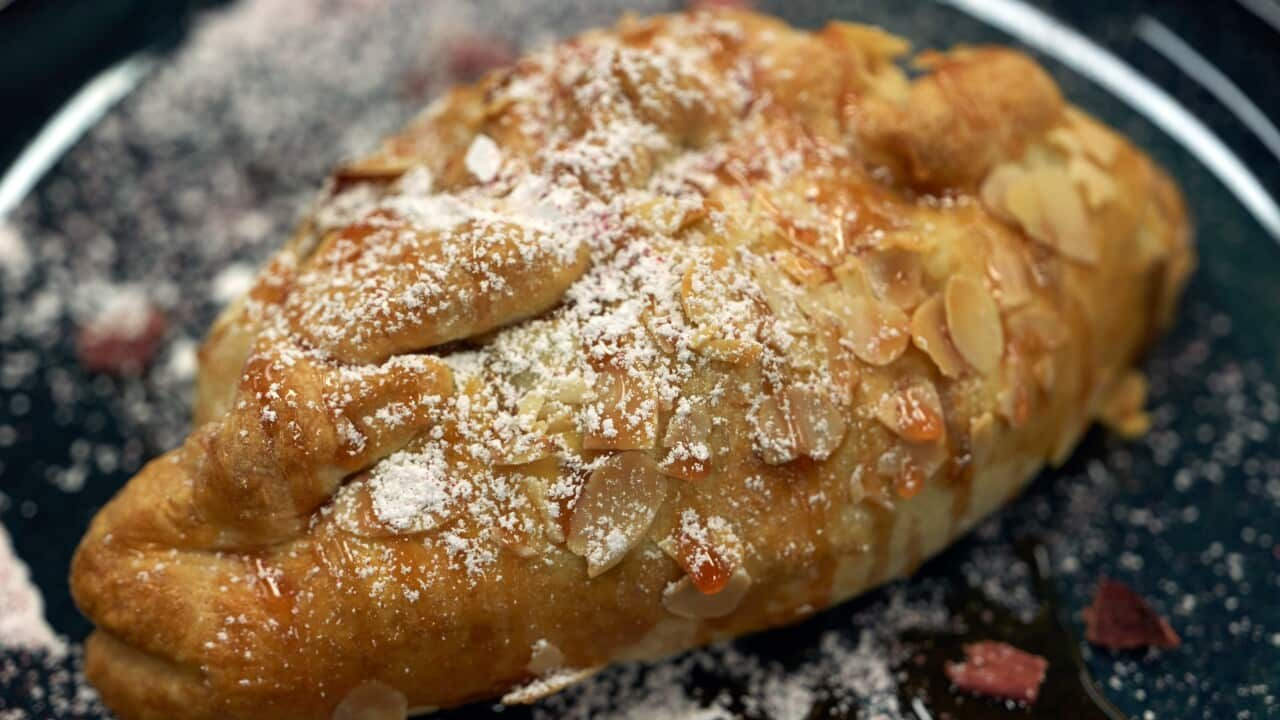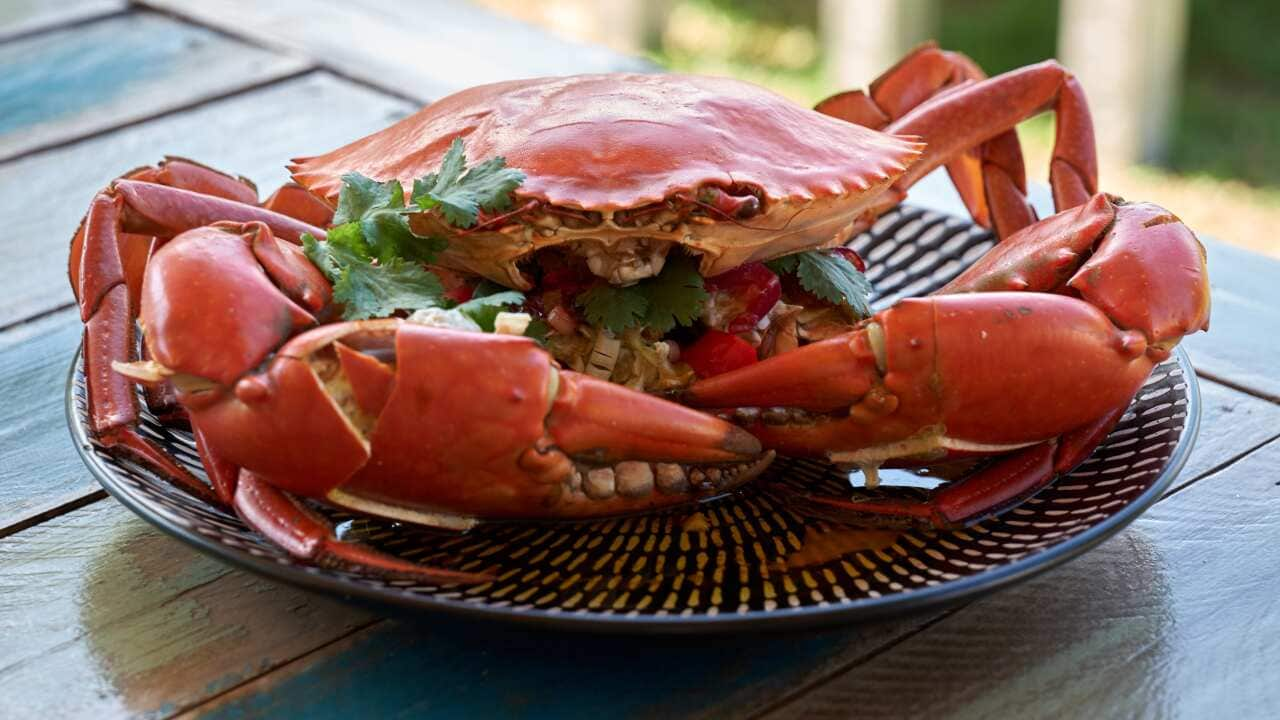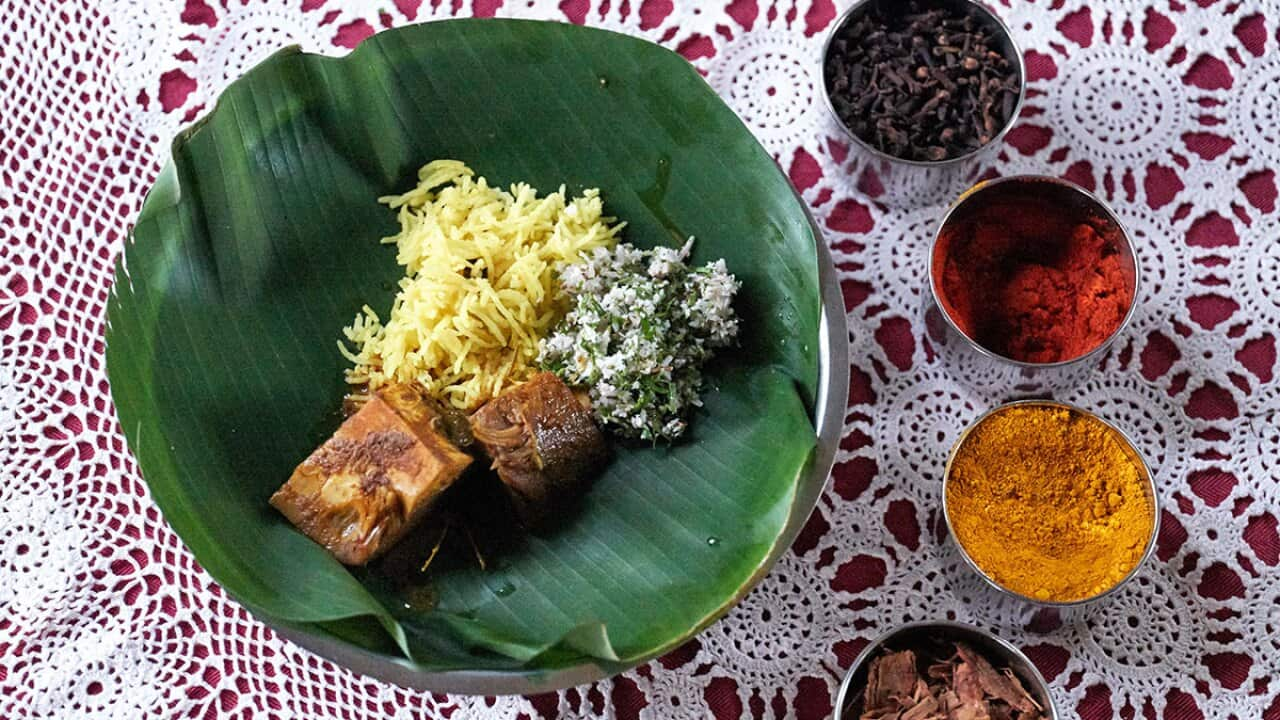--- Catch Jimmy Shu talking to Leila Nimbadja about bush apples in at 8.30pm, Thursday on SBS Food or ---
It’s easy to see why djarduk are also known as bush apples: these native fruits are like a gloriously vibrant cross between an apple and a pomegranate.
“I call them red bush apples,” says Leila Nimbadja, a traditional owner and bush foods supervisor at , part of the . Nimbadja, a senior Gurr-Goni woman, was a driving force behind setting up the wild foods business based at Maningrida, a town some 500 kilometres east of Darwin in the heart of Arnhem Land.
The Maningrida wild food collective is the reason the rest of Australia is starting to discover the vibrant red fruit: The Karen Sheldon Group in Darwin, and Ben Shewry at Attica in Melbourne, are among the chefs and restaurants exploring ways to serve this bush food.
READ MORE

Red bush apple bundles
The first commercial harvest of the fruit was in 2017 and djarduk season runs from roughly October to January. Clem Bresson, manager of enterprise development at Bawinanga says to keep supply going they also sell it frozen outside the harvest season. It grows in pockets around Maningrida, with the fruit harvested by traditional landowners after it drops from the trees. While it does grow in other parts of the Northern Territory, this is the only area harvesting a commercial crop. This year, the four-month harvest totalled about two tonnes.
“In the olden days, they used to be hunting for bush tucker all the time,” Nimbadja tells SBS Food. “When I was a little girl my grandparents used to carry the bush apples in dilly bags. They used to make billy cans with cabbage palms. They used to move from camp to camp to follow the bush foods. When they were seeing the bush apples flowering, they used to move there. They moved from the rainforest to the floodplains, from the seaside to the creek, all the time, every season.
You get that connection with bush foods from your parents. When your parents are gone, you pass it on to the next generation.
“Sometimes when our parents were talking, we used to go get some bush apples. When we went back to the camp and we ate them, and it would make our parents tell stories about the olden days. You get that connection with bush foods from your parents. When your parents are gone, you pass it on to the next generation. We used to lay down while were eating djarduk, watching the stars and moon while our parents were telling stories.” In Jimmy Shu’s Taste of the Territory, Darwin chef Jimmy Shu visits Maningrida to learn more about the local bush foods, and to meet Nimbadja. “In my language, I call them Mut-gu-mamirrtjiyi,” she says, giving him his first taste of the fruit, along with other food harvested in the area, including billy goat plums, berries and green ants. (You can find out more about other local names for djarduk, a member of the lilly pilly family, .)
In Jimmy Shu’s Taste of the Territory, Darwin chef Jimmy Shu visits Maningrida to learn more about the local bush foods, and to meet Nimbadja. “In my language, I call them Mut-gu-mamirrtjiyi,” she says, giving him his first taste of the fruit, along with other food harvested in the area, including billy goat plums, berries and green ants. (You can find out more about other local names for djarduk, a member of the lilly pilly family, .)

Jimmy Shu and Leila Nimbadja at Maningrida Source: Jimmy Shu's Taste of the Territory
So, what does it taste like? The texture is different to an apple; not crisp, Bresson says. “It’s more like a pomegranate”.
“It’s a lightly sweet flavour, almost perfumed,” says Karen Sheldon of the Karen Sheldon group, which has been cooking with the fruit for a couple of years. Her co-owner, Sarah Hickey, explains: “It’s an apple shape, but it’s actually got a thin amount of flesh. An apple has a core in the middle, but these have a huge big seed … It’s got a rose-like flavour and a real tartness.” Along with training programs for Indigenous students, the group also runs a catering business and Darwin’s , where they’ve combined djarduk with apple in crumbles and pastry bundles (get their bush apple bundle recipe). They’ve also tried drying the flesh.
Along with training programs for Indigenous students, the group also runs a catering business and Darwin’s , where they’ve combined djarduk with apple in crumbles and pastry bundles (get their bush apple bundle recipe). They’ve also tried drying the flesh.

Red bush apple bundles made by Karen Sheldon Catering. Source: Ben Ward / Jimmy Shu's Taste of the Territory
“We use a lot of bush foods, trying to develop some of the less common ones, and help the Aboriginal businesses,” says Sheldon. “We’d like to do more experimentation with the bush apple.”
You can also eat it just as it is. “In the olden days, we never ate orange or apple. We had our own bush food, like this red apple,” says Nimbadja in Taste of The Territory.
At Maningrida, they’ve tried making it into a chutney and a cordial, with a view to developing products to sell. They’re working on something else that sounds delicious, too: food tours, like the bushwalk Jimmy Shu goes on with Leila Nimbadja in Taste of the Territory. Developing those plans was put on hold while Australia dealt with COVID-19, Bresson says, but it’s something they hope to get up and running in the next year.  In the meantime, if you’re keen to get a taste of those vibrant bush apples, Maningrida has a small amount of it available frozen.
In the meantime, if you’re keen to get a taste of those vibrant bush apples, Maningrida has a small amount of it available frozen.

Leila Nimbadja teaches Jimmy Shu more about bush food at Maningrida Source: Jimmy Shu's Taste of the Territory
Along with djarduk, the collective also facilitates the commercial harvest of other bush foods – Kakadu plum season is underway right now, while other products, most of them seasonal, range from native root vegetables to green ants and seafood. And perhaps one day there will be another bush apple, too: when we ask Nimbadja how she likes to cook with bush apple, she says “We can mix the mut-gu-mamirrtjiyi (red bush apple) with yimurtpitj (pink bush apple). It’s another syzygium and they taste very good together.”
More tastes of the territory

Wattleseed and vanilla ice-cream






